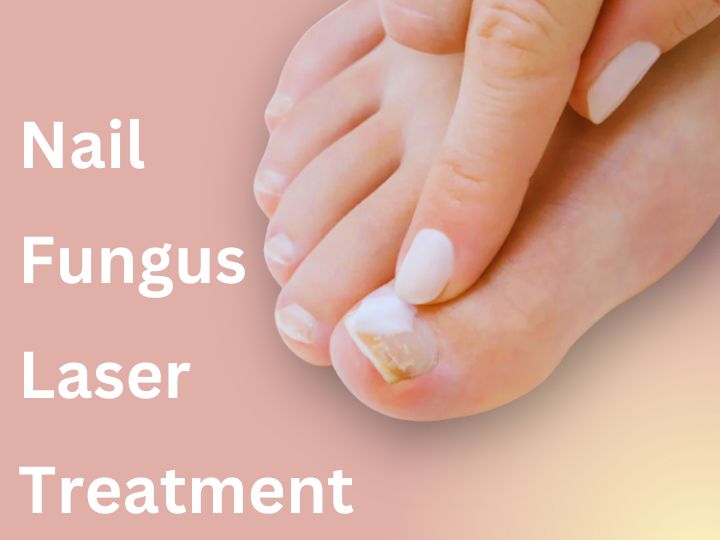Acrylic nails are a popular means of having long, perfect nails; however, sometimes they can come with hidden risks, especially for people who may have toenail fungus. As much as these enhancements make your nails look good, poor hygiene or lack of proper care could result in fungal infections that destroy the health of your nails. This blog will show the connection between toenail fungus and acrylic nails, how one can avoid the infection, and effective treatment for such infections.
Toenail Fungus Explained
Onychomycosis, or toenail fungus, is a common infection because fungi grow well in the warm, moist environment in and around the toenail. The fungi enter the nail and surrounding skin, causing symptoms such as discoloration of the nail, thickening, and crumbling edges. Symptoms may also advance to painful and unsightly over time, which can be difficult to treat.
Common Causes of Toenail Fungus:
- Exposure to damp environments, such as communal showers or locker rooms.
- Wearing non-breathable footwear for long periods.
- Injuries to the toenail that create entry points for fungi.
People with weakened immune systems, diabetes, or poor circulation are at higher risk for toenail fungus. Additionally, nail enhancements like acrylics can exacerbate the problem if not applied and maintained correctly.
How Acrylic Nails Can Contribute to Toenail Fungus
While acrylic nails are designed to enhance the beauty of natural nails, they can inadvertently create conditions that encourage fungal infections. Here’s how:
- Trapped moisture: Acrylic nails fit tightly over the nail, creating a warm, moist area underneath that is perfect for fungi to grow.
- Improper Application or Removal: Acrylic nails, if applied over a nail that has not been cleaned well or removed forcibly, may cause damage to the nail bed, which could lead to infection.
- Unclean Tools or Salons: The application of tools not properly sterilized, along with a visit to unsanitary salons, can expose nails to the causative fungi or bacteria.
If you notice signs of infection, such as unusual discoloration, swelling, or an unpleasant odor under the acrylic nails, it’s crucial to take action immediately.
Preventing Toenail Fungus with Acrylic Nails
Preventing toenail fungus starts with good hygiene and mindful nail care practices, especially if you frequently use acrylic nails. Here are some tips to keep your nails healthy:
- Go to a Reputable Nail Salon: Always choose a salon that is known for good hygiene. Ensure the tools are sterilized between clients and the throwaway items, like nail files, are discarded after each use.
- Avoid Thick Layers of Acrylic: The thicker the acrylic layers, the larger the likelihood that moisture gets caught. Keep applications thinner and allow the edges to be sealed appropriately to avoid gaps.
- Give Your Nails Time to Breathe: Never wear acrylic nails consecutively. Let your natural nails have a few weeks to recover and breathe in between applications, which will keep the chances of infection at bay.
- Practice good hygiene with your feet, keeping them clean and dry. After bathing, dry well between the toes; wear socks, which should be changed, particularly if your feet perspire a great deal.
Treating Toenail Fungus with Acrylic Nails
If you suspect a fungal infection under your acrylic nails, it’s essential to address the issue promptly. Here’s how to handle it:
- Removing Acrylic Nails: The first mode of treatment for toenail fungus involves the removal of acrylic nails, which helps the doctor establish the degree of the fungal infection. This helps the nail heal and decreases the chances of further spread of the fungus.
- Over-the-counter Antifungal Treatments: Antifungal creams, ointments, or nail polishes are available at most drug stores. These products can help treat mild fungal infections by following the directions on the package for best results.
- Medical Attention: If the infection is severe or has been long-standing, consult a podiatrist or dermatologist. They can prescribe more potent antifungal medications, even oral treatments, to clear the fungus.
- Can You Wear Acrylic Nails During Treatment? It is not advisable to wear acrylic nails during the treatment, though some antifungal nail polishes are available to camouflage the infected nail and also aid in the healing process.
Alternatives to Acrylic Nails for Fungus-Prone Individuals
If you’re prone to toenail fungus but still want beautiful nails, consider these alternatives to acrylic nails:
- Gel Nails: Gel nails are thinner and more flexible than acrylics, reducing the risk of trapping moisture. However, proper application and removal are still crucial to avoid damage.
- Natural Nail Care: Embrace your natural nails by keeping them trimmed, buffed, and moisturized. A clear polish or nail strengthener can enhance their appearance while keeping them healthy.
- Antifungal Nail Products: Look for breathable nail polishes or antifungal treatments that also serve a cosmetic purpose, allowing you to maintain style while preventing infections.
When to See a Doctor
In some cases, toenail fungus can become a serious problem that requires professional intervention. Here are signs it’s time to visit a doctor:
- The infection persists despite home treatments.
- The nail becomes extremely thick, brittle, or deformed.
- Pain or swelling develops around the nail.
- You have diabetes or another condition that affects circulation or immune response.
Professional Treatments Include:
- Prescription Medications: Topical or oral antifungal medications can effectively clear up severe infections.
- Laser Therapy: This option targets fungal infections with minimal discomfort and no downtime.
- Surgical Nail Removal: In extreme cases, the infected nail may need to be removed to allow a healthy nail to grow back.
Most Common FAQs
1. Can acrylic nails cause toenail fungus?
Yes. Acrylic nails can trap moisture under the nail, creating the perfect environment for fungal growth if they are not applied or maintained properly.
2. What are the early signs of toenail fungus under acrylic nails?
Early signs include nail discoloration (yellow, brown, or white spots), thickened nails, brittle edges, and sometimes a foul odor.
3. How can I prevent toenail fungus when wearing acrylic nails?
Choose a reputable salon with proper hygiene, avoid overly thick acrylic layers, give your nails breaks between applications, and keep your feet clean and dry.
4. Can I wear acrylic nails while treating toenail fungus?
It’s not recommended. Acrylic nails can worsen the infection by trapping moisture. Removing them allows antifungal treatments to work more effectively.
5. When should I see a doctor about toenail fungus?
If the infection doesn’t improve with home remedies, becomes painful, or you have underlying health conditions like diabetes, consult a podiatrist for treatment.
Conclusion
Fungus of the toenails and acrylic nails can be a tricky combination; caring for them properly minimizes the risks and keeps your nails healthy. Always observe hygiene, go for reputable salons, and don’t forget to give your nails time to recover between every application of acrylic. If there are signs of infection, act fast: remove the acrylic nails and get the appropriate treatment.
Remember, the health of the nails is just as important as their aesthetics; therefore, never hesitate to consult a medical professional in cases of persistence or severity. With these tips, one can enjoy the beauty of acrylic nails while keeping toenail fungus at bay.




